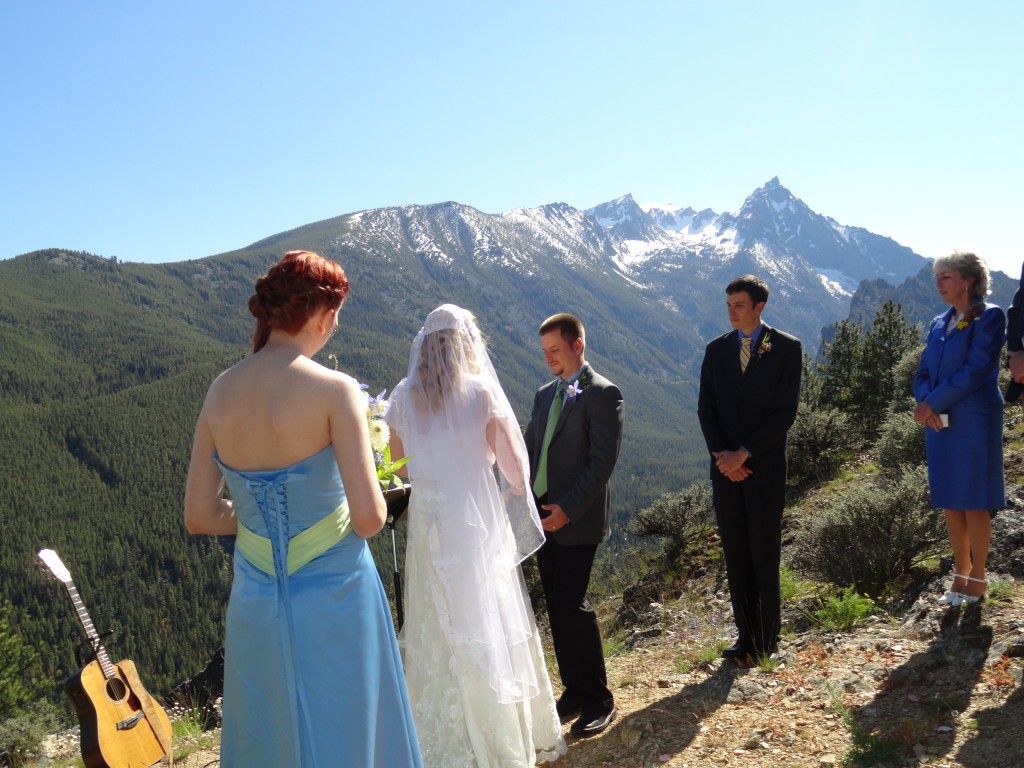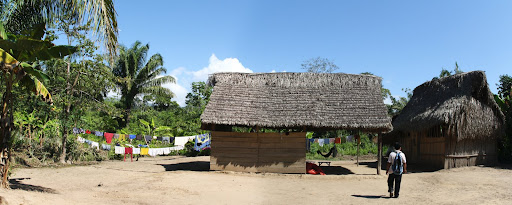On our second day of the park tour we left the San Miguel de Bala community and headed up river to Madidi National Park. After about 30 minutes of motoring we stopped at a small hut along the bank of the river that serves as the park ranger station. We paid our entry fee (125 Bs, $18) and continued to the point where the Rio Tuiche branches off from the Rio Beni. Despite the recent flooding there were many shallow areas along the way and it was entertaining to watch our guide fight his way around the rocky spots.
Eventually we pulled up along a rather nondescript section of the river bank and unloaded our bags. Our guide told us that he could smell chanchos (wild pigs) and that we might get to see them. Sure enough, after we walked the half-mile to the ecolodge we came upon a group of a couple of dozen milling around the camp – talk about stinky!
We spent a total of two nights at the ecolodge in the park. The accommodations were a little less sophisticated than what we had in the community but let’s face it – we were in the middle of the jungle. The sleeping area consisted of a building divided into three rooms and the bathroom was a separate hut with running water.
The main activity at the ecolodge was going on hikes through the surrounding jungle. Over the two days we completed 5 or 6 hikes with our guide who had an uncanny ability to spot, smell and hear animals. On our first walk through the woods we darted off the path after he heard the high-pitched whistling sound of a saddle-backed tamarin. We eventually caught up to the small primate but he (or she?) was still really difficult to see high in the canopy.
Even though the monkeys and colorful birds are the most popular sights among tourists I found the smaller wildlife equally interesting. Everywhere you look there are strange types of insects, lizards, plants and fungi on just about every surface. Our guide pointed out a nest of bullet ants which are inch-long insects that get their name from the pain associated with their bite. One of the teenagers at the community mentioned that he had been bit by one and spent the subsequent hours weeping in agonizing pain from the bite. The Wikipedia article on the subject states “waves of burning, throbbing, all-consuming pain that continues unabated for up to 24 hours.” Note to self: avoid bullet ants.
The famous leaf-cutter ants were good fun to watch. Spotting them is easy: you just look for the foot-wide river of leaves floating along the ground. The pieces they carry dwarf the ants themselves. Did you know that leaf-cutter ants are farmers? They take the leaves back to their nests where they decompose and serve as fertilizer for a fungus that the ants in turn consume.
We found plenty of feathered friends in the jungle. The toucans were a favorite and we came across the channel-billed variety on a couple of different occasions. There were also various birds of prey, woodpeckers, water birds, etc. Check out the thumbnail pictures below for more birds.
Monkey-wise the jungle treated us well. It took about five walks and lots of effort but eventually we found some howler monkeys. Hearing them is simple since their calls carry for miles through the jungle but getting close enough to see them through the dense foliage is another matter. On our last day, as if out of spite, a large group of them came straight to the ecolodge and hung out in the canopy eating leaves for a couple of hours. The males are strikingly large compared to the females.
So that wraps up our visit to Madidi National Park. We returned to Rurre in the boat on our forth day and worked on booking the next adventure. Heading the other direction from Rurre it is possible to visit Bolivia’s Pampas or grasslands. It is an area not too different from the Florida Everglades that is chock full of birds, caiman, and monkeys. More on that in the next post.












